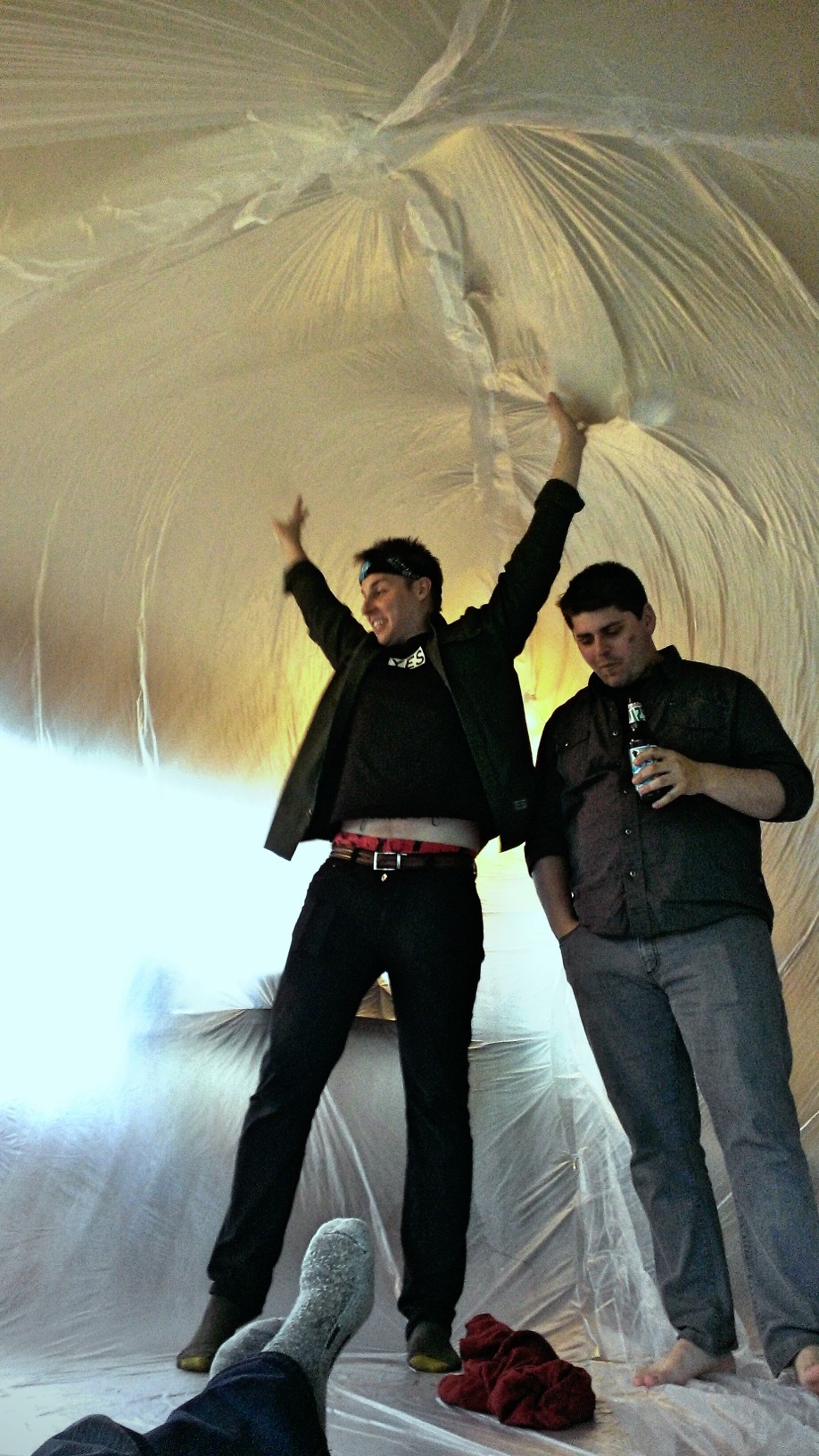In 1971 a group of avant-garde architects and designers from San Francisco calling themselves “Ant Farm” began traveling the country pedalling their Inflatocookbook; a tongue and cheek thesis-style publication, documenting the design and construction of their so called anti-architectural inflatables. The group would arrive at tour locations and unfurl a series of inflated spaces made from vinyl, polyethylene and tape, then pressurized by common box fans.
Members of "Ant Farm" with one of their inflatables.
Such a simple concept for built space has a refreshing dichotomy when compared to the contemporary American construction process.
Today, the daily routine of most American architects often centers around the design and drawing of legal documents. Focusing heavily on detailing of specific forms, assembling of materials, and the construction of space, we often rely on computer-aided-design (CAD) programs to realize our work. Using this digital medium to produce architecture has eliminated any opportunity for physical craft to inform any of the typical design phases.
Now, three-dimensional computer models and photo-realistic renderings attempt to to fill the void of spatial experience, but hopelessly lack the tactile information required to complete the sensations of human reality, in a built space. Such disconnect often leads to a sort of architectural impotence; a fatal inability to construct physical space.
Similar in nature to Ant Farm’s inflatable rooms, contemporary architects often seek outlets to express their common passion for form and space shaping. Rarely do we actually find the ideal opportunity with a budget, a site and/or legal permission to explore our professional medium, recreationally. Material costs drive the limitations in size and quality of most projects in the US, today.
Inspired by the fantastical work of Ant Farm, a small group of American architects have begun to remedy the above concerns through an exploration of the very mediums that were played with in the 1970’s. Using Polyethylene, Packaging Tape and Air Pressure to generate inhabitable space, a old window of spatial exploration has been re-opened for all to explore and discover.
Out of a curiosity for craft and construction of dynamic space, combined with a frustration with the realities of the American construction methods, the “Inflation Station” case study series has since started in the Summer of 2014. This is a true exercise of low-budget, low risk, rapid-space making that we hope will lead to a more complete understanding of active spaces.
Inside Case Study 1
Tools of the trade.
Taping seams.




















